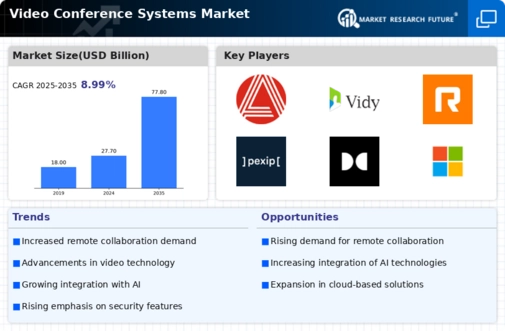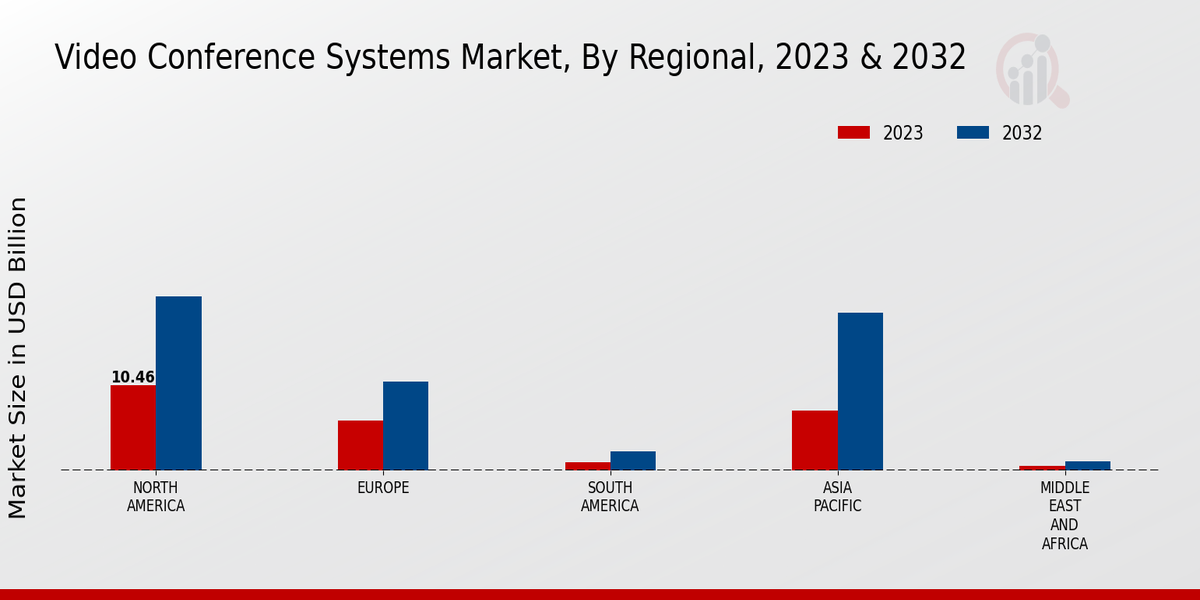Market Growth Projections
The Global Video Conference Systems Market Industry is poised for substantial growth, with projections indicating a market size of 27.7 USD Billion in 2024 and an anticipated increase to 77.8 USD Billion by 2035. This growth reflects a compound annual growth rate (CAGR) of 9.83% from 2025 to 2035, underscoring the increasing reliance on video conferencing solutions across various sectors. The expansion of remote work, coupled with advancements in technology, is likely to drive this growth further. As organizations continue to prioritize effective communication and collaboration, the demand for video conferencing systems is expected to rise, solidifying their role in the future of work.
Increased Focus on Employee Engagement
The Global Video Conference Systems Market Industry is significantly influenced by the increasing focus on employee engagement and well-being. Organizations are recognizing that effective communication is crucial for maintaining morale and productivity, particularly in hybrid work environments. Video conferencing systems facilitate face-to-face interactions, which can enhance relationships among team members and foster a sense of belonging. As companies strive to create inclusive work cultures, the demand for these systems is likely to rise. This trend is supported by the projected growth of the market, which is expected to reach 77.8 USD Billion by 2035, highlighting the importance of investing in tools that promote employee engagement.
Growing Demand for Remote Collaboration
The Global Video Conference Systems Market Industry experiences a robust demand for remote collaboration tools, driven by the increasing need for businesses to maintain connectivity across geographically dispersed teams. In 2024, the market is projected to reach 27.7 USD Billion, reflecting a significant shift towards digital communication solutions. Organizations are increasingly adopting video conferencing systems to enhance productivity and streamline operations. This trend is likely to continue as companies recognize the value of real-time communication, which fosters collaboration and innovation. The integration of advanced features such as screen sharing and virtual backgrounds further enhances user experience, making these systems indispensable in modern workplaces.
Globalization and Cross-Border Collaboration
Globalization has led to an increase in cross-border collaboration, significantly impacting the Global Video Conference Systems Market Industry. As businesses expand their operations internationally, the need for effective communication tools becomes paramount. Video conferencing systems enable seamless interactions between teams located in different countries, thus facilitating collaboration on projects and initiatives. This trend is further amplified by the rise of remote work, which necessitates reliable communication solutions. The market's growth trajectory suggests that organizations will continue to invest in these systems to support their global operations, ensuring that they remain competitive in an increasingly interconnected world.
Regulatory Support for Digital Communication
Regulatory support for digital communication is emerging as a key driver for the Global Video Conference Systems Market Industry. Governments and industry associations are recognizing the importance of digital tools in enhancing communication and collaboration across various sectors. Initiatives aimed at promoting digital infrastructure and connectivity are likely to bolster the adoption of video conferencing systems. As regulations evolve to support remote work and digital communication, businesses are expected to invest more in these technologies. This supportive environment may contribute to the anticipated growth of the market, positioning video conferencing systems as essential tools for modern organizations.
Technological Advancements in Video Conferencing
Technological advancements play a pivotal role in shaping the Global Video Conference Systems Market Industry. Innovations such as high-definition video quality, artificial intelligence, and cloud-based solutions are transforming how organizations conduct meetings. The introduction of features like virtual reality and augmented reality in video conferencing systems is expected to enhance user engagement and interaction. As these technologies evolve, they are likely to attract more users, thereby expanding the market. The anticipated growth rate of 9.83% CAGR from 2025 to 2035 indicates a strong trajectory for the industry, as businesses increasingly invest in cutting-edge solutions to improve communication and collaboration.













